From Manual to Smart: Pallet Inverters Transforming Italy's Material Handling
Are your warehouse operations a source of constant bottlenecks and frustration? You see your team manually transferring heavy loads from one pallet to another. It is slow, physically demanding, and risky. Every time a box is dropped or a worker strains their back, you see profits leaking away and operational efficiency plummeting. You know there has to be a better way, a modern solution that can keep up with the demands of today's logistics, especially in the fast-paced Italian market.
Pallet inverters are transforming material handling in Italy by automating the process of transferring goods between pallets. These machines safely and quickly rotate entire loads, allowing for the exchange of broken, unhygienic, or company-specific pallets in under a minute. This shift from slow, manual labor to smart, mechanized handling dramatically increases efficiency, enhances safety, and reduces product damage, making it a cornerstone of modern warehouse logistics.
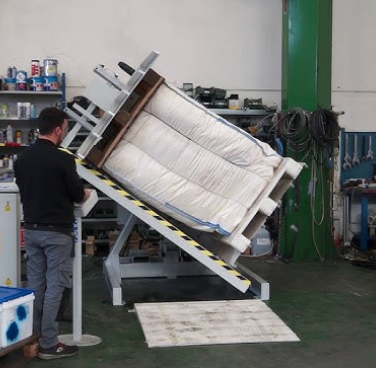
I have walked through countless factories in my career, from when I was a young engineer to now, as the owner of SHJLPACK. I have seen the same problems everywhere, from small workshops to massive steel mills. The challenge is always about moving things faster, safer, and cheaper. The journey from manual work to smart automation is not just about buying new machines. It is about changing how you think about your entire workflow. Let’s explore how this transformation is happening in Italy and what it means for your business.
How Do Pallet Inverters Actually Boost Warehouse Efficiency?
You watch your workers on the floor. Three of them are struggling to restack a pallet of goods because the original pallet is broken. The forklift is idle, the shipping lane is blocked, and the clock is ticking. This single, seemingly small problem creates a ripple effect, causing delays that cost you money and frustrate your customers. You feel the pressure of these inefficiencies piling up every single day.
A pallet inverter boosts warehouse efficiency by replacing a time-consuming, multi-person manual task with a single, automated action that takes less than 60 seconds. This allows for the rapid exchange of pallets for shipping, hygiene, or quality control reasons, which keeps product lines moving, reduces forklift and operator downtime, and streamlines the entire logistics chain from receiving to dispatch.
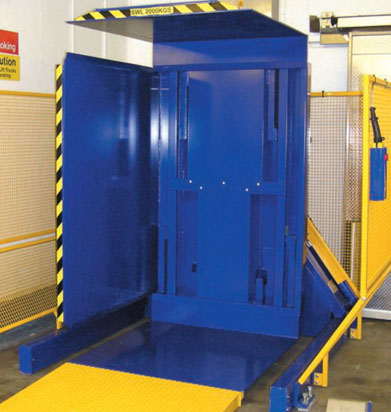
I remember visiting a client who ran a large food distribution center in the Emilia-Romagna region of Italy. Their main problem was efficiency, just as I described. They had to switch from internal plastic pallets to cheaper wooden ones for outbound shipping. Let's dig deeper into how the solution we provided, a pallet inverter, fundamentally changed their operation.
The Speed Advantage: From Minutes to Seconds
Before the inverter, their process was entirely manual. It took two workers about 15-20 minutes to transfer a full load. They had to unwrap the pallet, move boxes by hand, and then re-wrap the new pallet. This was a major bottleneck. When we installed the pallet inverter, that entire process was reduced to under a minute with a single operator. The forklift driver would place the pallet in the machine, press a button, and the machine would clamp the load, rotate it 180 degrees, and allow the old pallet to be removed from the top. The new pallet was placed, and the machine rotated it back. The time savings were immediate and massive. For a business shipping hundreds of pallets a day, this meant gaining back hours of productive time.
Eliminating Bottlenecks in the Flow
A warehouse is like a river; everything must flow smoothly. A single bottleneck can dam up the entire system. In many Italian warehouses, especially those dealing with high-volume goods like ceramics or textiles, the pallet exchange area is a common point of congestion. Pallet inverters remove this dam. They can be placed strategically at receiving docks to switch incoming goods to in-house pallets or at shipping docks to prepare for export. This creates a predictable, consistent, and fast-flowing process. It eliminates the queues of forklifts and workers waiting to perform a manual task, allowing for a much higher throughput.
Reducing Human Error and Product Damage
Every time a human hand touches a product, there is a risk of error or damage. Boxes can be dropped, bags can be torn, and fragile items can be shattered. When restacking manually, the stability of the new pallet is often compromised. A pallet inverter handles the entire load as a single, secure block. The clamping pressure is adjustable to be gentle on sensitive goods while remaining firm enough to ensure nothing moves. This drastically reduces the rate of product damage. For my client in Italy, this meant a significant drop in write-offs for damaged goods, which directly improved their bottom line.
| Feature | Manual Pallet Exchange | Pallet Inverter Exchange | Efficiency Impact |
|---|---|---|---|
| Time per Pallet | 15-20 minutes | < 1 minute | > 90% time reduction |
| Labor Required | 2-3 workers | 1 operator | ~67% labor reduction |
| Product Damage Risk | High | Very Low | Improved profit margin |
| Workflow Impact | Creates major bottlenecks | Creates smooth, continuous flow | Increased overall throughput |
| Worker Safety | High risk of strain/injury | Minimal physical effort required | Reduced workplace accidents |
What Are the Real Costs and Savings of a Pallet Inverter?
You look at the quote for a new pallet inverter and see a significant number. Your mind immediately goes to the budget. It is easy to see this as a major expense. But then you think about the hidden costs you are already paying: the salaries of workers tied up in manual handling, the value of products damaged during transfer, the fees for renting high-quality pallets that you can't get back from customers, and the financial impact of workplace injuries. These invisible costs are draining your business every single day.
The real cost of a pallet inverter is not its purchase price but the total cost of ownership, which is quickly offset by substantial, measurable savings. These savings come from drastically reduced labor costs, near-elimination of product damage during transfer, the ability to reuse expensive internal pallets instead of shipping them out, and increased operational uptime, all of which contribute to a strong and rapid return on investment (ROI).
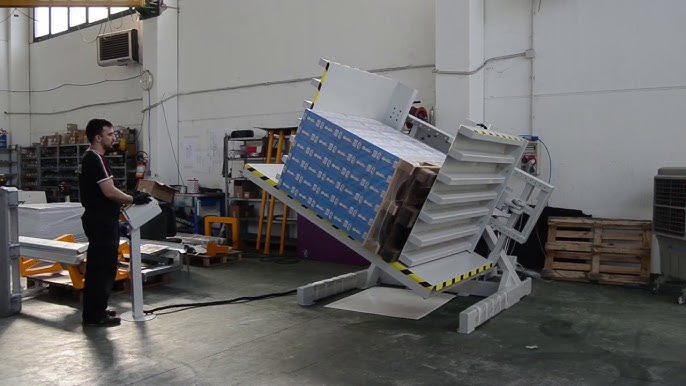
When I started my own factory, every single investment was scrutinized. I know what it is like to be Javier, the steel mill owner, who needs to see a clear path to profitability for any new equipment. An investment must solve a problem and pay for itself. Let’s break down the economics of a pallet inverter with the same practical mindset I use for my own business.
Calculating the Return on Investment (ROI)
The first step is to look beyond the initial price tag. We need to calculate the ROI. Let's take a simple, conservative example based on a typical Italian manufacturing company.
- Labor Savings: Imagine two workers earning €15/hour each spend 3 hours per day just swapping pallets. That's (€15 x 2 workers x 3 hours) = €90 per day. A pallet inverter with one operator does the same work in 30 minutes. The savings are huge over a year.
- Product Damage Reduction: If your company writes off €20,000 per year in goods damaged during manual handling, and an inverter reduces this by 90%, you save €18,000 annually.
- Pallet Cost Management: Many companies in Europe use high-quality plastic or hygienic pallets that cost over €50 each. If you are forced to ship these out on a one-way trip, the loss is enormous. A pallet inverter allows you to switch to cheap, one-way wooden pallets (costing €5-€7) for shipping, keeping your valuable assets in-house. Saving just 10 high-quality pallets a day can result in savings of over €100,000 a year.
Total Cost of Ownership (TCO)
A smart business leader like Javier looks at the Total Cost of Ownership, not just the purchase price.
- Initial Cost: This is the price of the machine itself.
- Installation & Training: A good partner will include this, ensuring your team can use the machine safely and effectively from day one. At SHJLPACK, we see this as part of the solution, not an extra.
- Maintenance: Modern pallet inverters are built to be robust. With simple daily checks and a yearly service, they are incredibly reliable. This cost is minimal compared to the cost of downtime from an unreliable manual process.
- Energy Costs: These machines are efficient. They only consume significant power during the few seconds of the rotation cycle, making their impact on your electricity bill very small.
The Intangible Savings
Not all benefits show up on a spreadsheet immediately, but they are just as real.
- Improved Worker Morale: Removing a physically punishing task shows your employees that you value their well-being. This leads to higher morale and lower staff turnover.
- Enhanced Company Image: A modern, clean, and automated facility impresses customers. It shows you are a forward-thinking company that invests in quality and efficiency. This can be a deciding factor for clients choosing between you and a competitor.
| Cost/Saving Category | Manual Process (Annual Cost) | Pallet Inverter (Annual Impact) |
|---|---|---|
| Labor Costs | €22,500 (2 workers, 3hrs/day) | - €20,000 (Significant Reduction) |
| Product Damage | €20,000 (Example figure) | - €18,000 (90% Reduction) |
| Pallet Fleet Management | €50,000+ (Loss of expensive pallets) | - €45,000 (Switch to cheap pallets) |
| Workplace Injury Claims | Variable, but potentially high | Near €0 for this specific task |
| Initial Investment | €0 | + €25,000 - €50,000 (One-time) |
| Net First-Year Impact | - €92,500 (Ongoing Costs) | Positive ROI within the first year |
Note: Figures are illustrative examples to demonstrate the calculation method.
Why is Customization Key for Pallet Inverters in Specialized Industries?
You have a unique product. Maybe it is oversized steel coils, delicate pharmaceutical vials, or heavy bags of cement. You see a standard pallet inverter online and wonder if it will work. The risk is that a "one-size-fits-all" solution will fail to handle your specific load properly, leading to damaged products, unsafe operation, or the machine being completely unusable for your needs. This is a common fear, and it is a valid one.
Customization is key because specialized industries in Italy and beyond have unique material handling challenges that standard machines cannot address. Whether it's the need for stainless steel construction for food and pharma, heavy-duty capacity for metals, or specific clamping mechanisms for irregular loads, a customized pallet inverter ensures optimal safety, efficiency, and protection for your specific products.
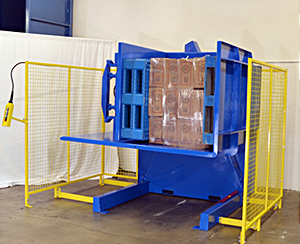
I see myself not just as a machine builder, but as a problem solver. That is the core of our mission at SHJLPACK. A client in the Italian marble industry once came to me. They needed to switch heavy, awkward slabs from transport pallets to sturdier workshop pallets. No standard machine could handle the weight distribution and sheer bulk. We had to design a solution from the ground up. This experience taught me that understanding the customer's world is more important than selling a machine.
Adapting to Industry-Specific Needs
Different industries have vastly different requirements. A standard pallet inverter is often designed for uniformly stacked boxes on a standard pallet. But the real world is more complex.
- Food & Beverage: This sector, huge in Italy, requires absolute hygiene. Machines must often be made from stainless steel for washdown environments to prevent bacterial growth. Clamping pressure must be gentle enough not to crush cartons of juice or bags of pasta.
- Pharmaceuticals: Similar to food, this industry demands sterile environments (cleanrooms). Pallet inverters might need special paint, smooth surfaces with no crevices where contaminants can hide, and full regulatory compliance documentation.
- Metals and Building Materials: Here, the challenge is weight and durability. Javier's steel mill would need a machine capable of handling immense loads of steel coils or wire. The construction must be incredibly robust, with powerful hydraulics and reinforced frames to operate safely day after day.
- Paper and Printing: Large rolls of paper or stacks of printed sheets can be unstable. These applications may require special clamping tables with non-slip surfaces or side-support walls to ensure the load does not shift during rotation.
The Consultation and Design Process
A true partner does not just show you a catalog. They start by asking questions. When a client approaches us, our process is to listen first. We want to understand:
- The Product: What is its weight, size, and shape? Is it stable or unstable? Fragile or robust?
- The Pallet: What types and sizes of pallets are you using? (e.g., CHEP, Euro, custom sizes).
- The Environment: Where will the machine be located? Is it a cleanroom, a wet environment, or a heavy industrial zone?
- The Workflow: How will the machine be loaded and unloaded? By forklift, pallet jack, or conveyor?
Based on this information, we engineer a solution. This is not just about changing the color. It is about fundamental design choices that make the machine a perfect fit for the job.
| Industry | Standard Machine Challenge | Custom Solution Example | Benefit of Customization |
|---|---|---|---|
| Food & Beverage | Painted steel rusts in washdown areas. | Full stainless steel 304 construction. | Guarantees hygiene and long machine life. |
| Pharmaceuticals | Standard hydraulics can leak oil. | Electric drive system, cleanroom-grade paint. | Prevents contamination, meets regulations. |
| Steel/Metals | Cannot handle the extreme weight. | Reinforced frame, up-rated hydraulics, larger motors. | Ensures safe and reliable operation with heavy loads. |
| Paper/Printing | Unstable loads can shift or collapse. | Adjustable side walls and non-slip clamping surfaces. | Protects product integrity and prevents accidents. |
How are Smart Pallet Inverters Driving the Next Wave of Automation?
You are striving to create a fully connected factory, a "smart factory" where data drives decisions. You look at your existing equipment, and much of it operates in isolation. These machines are like islands, unable to communicate with each other or with your central management systems. You know that to achieve your goals of 95% uptime and deep digitalization, you need equipment that is not just strong, but also intelligent.
Smart pallet inverters are driving the next wave of automation by moving beyond simple mechanical functions. They integrate seamlessly with factory-wide Warehouse Management Systems (WMS) and Manufacturing Execution Systems (MES), use IoT sensors to provide real-time data for diagnostics and predictive maintenance, and operate as part of a fully automated, data-driven production line.
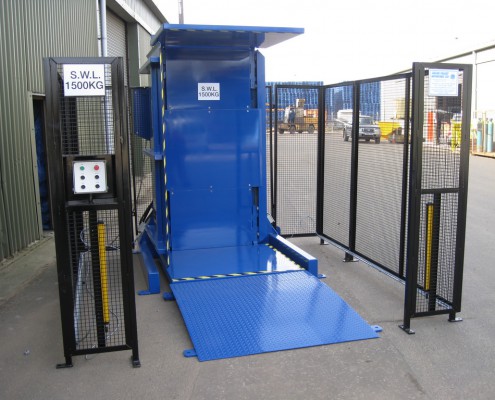
My journey from engineer to factory owner has been fueled by a passion for innovation. I saw how automation transformed the assembly line. Now, I see how data is transforming automation itself. For a leader like Javier, who has already implemented smart scheduling and energy systems, the next logical step is to demand this level of intelligence from every piece of equipment, including material handling machines. A pallet inverter is no longer just a rotator; it is a data node on your factory floor.
Integration with MES and WMS
A smart pallet inverter is not a standalone unit. It's a team player.
- Automated Workflow: It can receive commands directly from your WMS. For example, when a specific order is ready for shipping, the WMS can tell the inverter which pallet to retrieve and what type of shipping pallet to switch it to. This eliminates the need for a human operator to read a work order and manually select a program.
- Data Feedback: After completing a cycle, the inverter reports back to the MES. It can confirm the task is complete, log the time, and even record the weight of the pallet. This data provides 100% traceability and visibility into your operations. You know exactly when and where every pallet was handled.
The Power of IoT and Predictive Maintenance
This is where things get truly exciting for an engineer like me, and incredibly valuable for a CEO like Javier.
- Condition Monitoring: IoT sensors embedded in the machine monitor key parameters in real-time: hydraulic pressure, motor temperature, cycle count, vibration levels.
- Predictive Maintenance: This data is fed into an analysis platform. Instead of waiting for a breakdown, the system can predict when a component is likely to fail. It can send an alert to your maintenance team, saying, "The hydraulic pump has shown an unusual vibration pattern for the last 50 cycles. Recommend inspection within the next 48 hours." This allows you to schedule maintenance during planned downtime, moving you closer to that goal of 95% equipment uptime. It transforms maintenance from a reactive fire-fight to a proactive, strategic function.
From a Machine to a System
A smart pallet inverter can be the heart of a fully automated cell. Imagine this workflow: an Automated Guided Vehicle (AGV) delivers a pallet from the production line to the inverter. The inverter communicates with the AGV, automatically loads the pallet, performs the exchange, and then signals the AGV to pick up the newly processed pallet and take it to the shipping dock. This entire sequence happens with zero human intervention. This is the future of material handling, and it is happening now in advanced facilities across Italy and the world.
| Feature | Standard Pallet Inverter | Smart Pallet Inverter | Impact on Operations |
|---|---|---|---|
| Operation | Manual button press by an operator. | Can receive commands from WMS/MES. | Fully automated workflow, reduced labor. |
| Data | No data output. | Logs cycles, time, errors, weight. | Provides full traceability and visibility. |
| Maintenance | Reactive (fix when it breaks). | Predictive (IoT sensors predict failures). | Maximizes uptime, reduces downtime costs. |
| Integration | Standalone machine. | Integrates with AGVs, conveyors. | Enables end-to-end automation. |
What's the One Thing Most CEOs Overlook When Buying a Pallet Inverter?
You have done all the analysis. You have calculated the ROI, chosen a smart, customized machine, and negotiated a good price. You feel confident that you have made the right decision. The machine arrives, it is installed, and then... it sits under-utilized. Your team avoids it, preferring the old, slow manual way they are used to. Productivity does not improve as you expected. You have invested in the best technology, but you have overlooked the most critical component: the human factor.
The one thing most CEOs and managers overlook when buying a pallet inverter is the importance of comprehensive operator training and proactive change management. The most advanced machine in the world is only as effective as the team operating it. Without proper adoption and buy-in from your people, your investment in technology will never deliver its full potential.

This is a lesson I learned the hard way. Early in my career, I helped install a fantastic, automated packing line for a client. We were all so proud of the engineering. But a few months later, I heard they were having problems. I went to visit, and I saw operators had disabled half the safety features and were using manual overrides because "it was faster." They had never been properly trained on why the system was designed the way it was. They had not been made part of the process. The technology was perfect, but the implementation failed. From that day on, I knew that our job at SHJLPACK wasn't just to sell machines; it was to deliver successful outcomes.
Technology is Only Half the Solution
We, as engineers and business leaders, can get excited about specifications and capabilities. We see the potential. But for an operator on the factory floor, a new machine can be intimidating. It represents change, and change can feel like a threat. They may worry:
- "Will this machine take my job?"
- "Is it complicated to use? What if I break it?"
- "The old way was slow, but I understood it. This is new and scary."
If you do not address these fears head-on, your team will resist the change. This resistance can be active (refusing to use it) or passive (using it incorrectly or inefficiently).
Building a Culture of Adoption
A successful implementation is a partnership between management, the supplier, and the operators.
- Communicate the "Why": Before the machine even arrives, explain to your team why you are making this investment. Frame it as a tool to make their jobs easier, safer, and more valuable, not as a replacement for them. Show them how it helps the company succeed, which secures everyone's future.
- Involve Key Operators: Identify one or two of your best operators and involve them in the final selection or customization process. Make them champions for the new technology. When their peers see them embracing it, they are more likely to follow.
- Invest in Proper Training: Training should not be a 15-minute handover. It should be a comprehensive program provided by the supplier. At SHJLPACK, we insist on training not just the "how" (which buttons to press) but also the "what" (what the machine is doing) and the "why" (why the safety procedures are important). We also train on basic troubleshooting and daily checks.
Your Supplier as a Training Partner
This is where the difference between a simple supplier and a true strategic partner becomes clear. A partner does not disappear after the check clears. They should be there to ensure a smooth transition. They should provide clear documentation, hands-on training for multiple shifts, and be available for follow-up questions. A good partner wants to see you succeed with their equipment. Their reputation depends on it.
| Implementation Step | Ineffective Approach (Common Mistake) | Effective Approach (Best Practice) |
|---|---|---|
| Communication | The machine just shows up one day. | Management explains the benefits to the team in advance. |
| Team Involvement | No one is consulted. | Key operators are made "champions" of the new tech. |
| Training | A quick demo of the ON/OFF switch. | Comprehensive, hands-on training on operation, safety, and basic maintenance. |
| Supplier Role | Disappears after installation. | Acts as a long-term partner for training and support. |
| Expected Outcome | Poor adoption, low ROI, frustration. | High adoption, strong ROI, empowered team. |
Conclusion
Pallet inverters are more than machines. They are strategic assets that drive efficiency, safety, and smart automation, transforming your entire material handling workflow from a costly problem to a competitive advantage.



